▼ India signs first loan agreement with NDB [03-31-17]
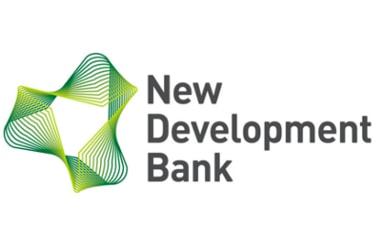 India signed its first loan agreement with the New Development Bank (NDB) for $350 million to be used in the development and upgradation of district roads in Madhya Pradesh. India signed its first loan agreement with the New Development Bank (NDB) for $350 million to be used in the development and upgradation of district roads in Madhya Pradesh.
“he objective of the project is the upgradation of major district roads in the state of Madhya Pradesh to improve connectivity of the interior areas of the state with the national and state highway networks.
The project would include upgradation, rehabilitation or reconstruction of approximately 1,500 km of district roads to intermediate lane, all-weather standards, with road safety features and improved road asset maintenance and management.
The project is to be implemented over five years with the Government of Madhya Pradesh and the Madhya Pradesh Road Development Corporation acting as the implementing agencies.
The loan agreement was signed by Raj Kumar, Joint Secretary, Department of Economic Affairs and Xian Zhu, Vice President & Chief Operating Officer of the New Development Bank.
New Development Bank: Know More
- Headquarters: Shanghai, China
- President: K. V. Kamath
- Founder: BRICS
- Founded: 15 July 2014, Fortaleza, Ceará, Brazil
- Type of business: International Financial Institution
- First president: K. V. Kamath
|
▼ India turns into net exporter of electricity [03-30-17]
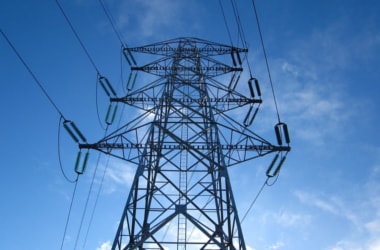 India has become a net exporter of electricity during the April-February 2017 period this fiscal for the first time. India has become a net exporter of electricity during the April-February 2017 period this fiscal for the first time.
This is as per the Central Electricity Authority, the designated authority of the government of India for cross border trade of electricity.
This is the first time India has turned from net importer of electricity to net exporter.
According to the statement, during the current year 2016-17 (April-February), India has exported around 5,798 million units to Nepal, Bangladesh and Myanmar.
This is 213 million units more than the import of around 5,585 million units from Bhutan.
Export to Nepal and Bangladesh increased 2.5 and 2.8 times respectively in the last three years. Ever since the cross border trade of electricity started in mid-80s, India has been importing power from Bhutan and marginally exporting to Nepal in radial mode at 33 kV and 132 kV from Bihar and Uttar Pradesh respectively.
On an average, Bhutan has been supplying around 5,000-5,500 million units to India.
India had also been exporting around 190 MW power to Nepal over 12 cross border interconnections at 11kV, 33kV and 132 kV level.
The export of power to Nepal further increased by around 145 MW with commissioning of Muzaffarpur (India)– Dhalkhebar (Nepal) 400kV line (being operated at 132 kV) in 2016.
The export of power to Bangladesh from India got further boost with commissioning of the first cross border interconnection between Baharampur in India and Bheramara in Bangladesh at 400kV in September 2013.
It was further augmented by commissioning of second cross border Interconnection between Surjyamaninagar (Tripura) in India and South Comilla in Bangladesh.
At present, around 600 MW power is being exported to Bangladesh.
The export of power to Nepal is expected to increase by around 145 MW shortly over 132 kV Katiya (Bihar) - Kusaha (Nepal) and 132 kV Raxaul (Bihar) - Parwanipur (Nepal).
Bhutan: Know More
- Capital: Thimphu
- King: Jigme Khesar Namgyel Wangchuck
- Prime minister: Tshering Tobgay
- Currencies: Indian rupee, Bhutanese ngultrum
- Official language: Dzongkha
|
▼ SBI launches Unnati card [03-30-17]
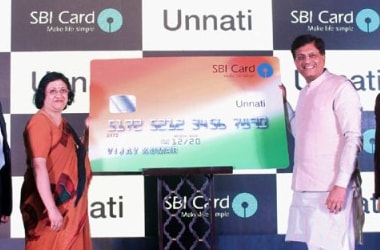 State Bank of India on 28th March 2017 announced offering credit cards to account holders with a balance of INR 20,000-25,000. State Bank of India on 28th March 2017 announced offering credit cards to account holders with a balance of INR 20,000-25,000.
The card called Unnati will be offered through a network of 20 thousand plus SBI branches.
SBI will not consider the customer's credit history. Card called Unnati will be issued free for first four years.
Lack of credit history will be the challenge in increasing card penetration in the country. Card will facilitate generation of credit history for fresh users which will bring them into the organised financial stream.
To encourage adoption of credit cards and facilitate expansion in the reach of digital payments, the SBI Card Unnati will be offered free, at zero annual fee, for four years.
SBI has close to 30 crore customer accounts, including Jan Dhan Yojana. Post-demonetisation the balance amount in these accounts increased significantly.
Many customers do not have credit history and are not eligible for cards. SBI wants to bring about financial inclusion in terms of credit facility with this new product.
The Bank is also in the process of increasing its stake in SBI Card to 74 per cent.
SBI currently holds 60 per cent stake in SBICPSL and 40 per cent in GECBPMSL.
The balance being held by GE Capital in both the ventures.
The SBI has approval to infuse Rs 1,160 crore in the two JVs - SBI Cards and Payment Services Pvt Ltd (SBICPSL) and GE Capital Business Processes Management Services Ltd (GECBPMSL)- through purchase of equity shares from GE Capital.
This is to increase the bank's stake in both the companies to 74 per cent.
The nation's largest lender SBI entered credit card business in 1998 by roping GE Capital India, the consumer finance arm of US-based GE Capital.
SBI Card, having 4.3 million user, said its latest offering 'Unnati' targeted at all SBI customers, including Jan Dhan account holders throughout the country.
SBI: Know More
- Founded: 2 June 1806, Bank of Calcutta/ 27 January 1921, Imperial Bank of India/ 1 July 1955, State Bank of India/ 2 June 1956, nationalization
- Headquarters: Mumbai, Maharashtra, India
- Area served: Worldwide
- Chairperson: Arundhati Bhattacharya
- Products: Consumer banking, corporate banking, finance and insurance, investment banking, mortgage loans, private banking, private equity, savings, securities, asset management, wealth management, credit cards.
|
▼ Digidhan fair at Motihari [03-29-17]
Promotion of Digidhan and cashless transactions are part of the mission to bring digital transactions to the fore.
Keeping this in mind, a Digidhan Fair was held in Motihari, Bihar.
The fair involved banks, Common Service Centres (CSC), private digital payment service providers etc. informing the consumers as well as traders about the new technology.
Government has taken several initiatives to promote cashless transactions. Keeping cashless transaction and increasing population of educated youth under consideration, the government has launched Bheem App, which is quite popular.
So far 1.25 crore people have been linked to the App and a transaction of Rs. 361 crore has been made.
More than 100 crore phones are there in India and out of them 30-40 crore is smartphones.
There are about 50 crore internet users.
If used properly, credit cards won’t be required.
Banks have devised UPI cards under which if the mobile app is downloaded, people can do the transaction through any bank on the basis of their phone numbers.
2.15 crore railway tickets are booked out of which 1.30 crore tickets are booked online. He informed that there is 144 crore bank accounts by and large, out of them 117 are the savings account.
A total number of Jandhan account is 28.02 crore.
So far 40 crore bank accounts are linked to Aadhaar Cards.
Total number of Aadhaar cards is 113 crore and there is 20.13 crore POS machines in the country and by the end of this month 10 lakh new machines will be added.
Apart from this, there is 5.7 crore e-wallet users and 110.6 crore credit/debit cards.
So far 21.9 crore consumers have got Rupay cards and its usage has increased up to 40% in the recent time.
Steps to Curb Black Money: Know More - Special Investigation Team (SIT) was constituted.
- A law was made to tackle undeclared foreign assets and deposits.
- India revised the Double Taxation Avoidance Agreement (DTAA) with Mauritius and Cyprus
- A treaty was signed with Switzerland to obtain information about the bank accounts of Indians in HSBC bank.
- Cashless and digital payments have to be promoted
- Benami Transaction act will be modified.
- Income declaration scheme 2016
|
▼ CBEC becomes CBIC [03-27-17]
Apex policy making body for indirect taxes, CBEC is now to be known as Central Board of Indirect Taxes & Customers in the run up to the GST regime from July 1.
CBEC is being renamed as the Central Board of Indirect Taxes and Customers after getting legislative approval.
CBIC will supervise the work of all field formations and directorates and assist the government in policy making in relation to GST, continuing central excise levy and custom functions.
The existing formations of central excise and service tax under the CBEC have been re-organised to implement and enforce the provisions of the proposed GST Laws, it added.
The renamed Directorate General of Goods & Service Tax Intelligence is also being strengthened and expanded to become an important wing of the government in its fight against tax evasion and black money.
The existing training establishment, to be renamed as National Academy of Customs, Indirect Taxes and Narcotics will have an all-India presence.
This will enable capacity building to the employees of the indirect tax administration of the Centre as well as of the State Governments and to members of Trade and Industry.
GST: Know More - Indirect tax reform GST is expected to curb tax evasion.
- It will make commodities cheaper and add up to 2 per cent to India’s GDP growth.
- GST will subsume excise, service tax, VAT and other local levies.
CBIC
- The CBIC will have 21 zones.
- It will have 101 GST Tax payer Services Commissionerates comprising 15 sub-Commissionerates,
- 768 Divisions, 3,969 Ranges, 49 Audit Commissionerates and 50 Appeals Commissionerates are also included .
|
▼ IBBI: IPs can't work in companies [03-23-17]
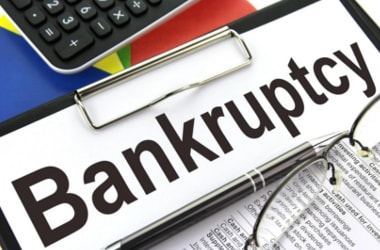 The first order issued by the recently-established Insolvency and Bankruptcy Board of India (IBBI) is expected to influence many firms, including well-known consultancies that are eyeing the huge market for stressed assets and debt resolution. The first order issued by the recently-established Insolvency and Bankruptcy Board of India (IBBI) is expected to influence many firms, including well-known consultancies that are eyeing the huge market for stressed assets and debt resolution.
In its March 2 order, IBBI rejected an application for registration as an Insolvency Professional (IP) by an individual who works with one of the so-called Big Four consultancy firms.
It held that “... an IP must not ‘engage in any employment’, repeat ‘any employment’.
It envisages that a person must not play two roles — profession and employment - simultaneously,” according to the order.
IBBI is not going to grant registration to individuals in such a scenario and so entities that want to be registered will have to form a separate subsidiary with dedicated resources related to insolvency and bankruptcy work.
The law does allow insolvency professional entities or IPEs wherein the majority of partners are registered IPs.”
This segment is going to be extremely large in the future. There is around ?6.6 lakh crore worth of recognised NPAs in the banking sector as of today.
Legal experts say that the first order from IBBI has set a tone on how it is going to interpret the provisions of its regulations and is in line with the views of other regulators.
IBBI: Know More
- IBBI seeks to consolidate and amend laws relating to reorganisation as well as insolvency resolution of corporate persons, partnership firms and individuals in a time-bound manner.
- It has been set up by the code to regulate professionals, information utilities (IUs) and agencies engaged in the resolution of insolvencies of companies.
- It has chairman and 10 members.
- Current chairman is M S Sahoo.
- There four government-nominated members.
|
▼ E-commerce firms to deduct 1 percent TCS: GST [03-20-17]
 eCommerce firms like Snapdeal and Amazon will have to deduct 1 percent tax collected at source while making payments to suppliers under the GST regime which is expected to come in from July 1. eCommerce firms like Snapdeal and Amazon will have to deduct 1 percent tax collected at source while making payments to suppliers under the GST regime which is expected to come in from July 1.
Model Goods and Services Tax law, finalised by the GST Council, provides 1 percent TCS to be deducted by e-commerce operators.
Model law provides electronic commerce operators who are not agents should collect one percent TCS as notified on the recommendation of the Council of net value of taxable supplies made by other suppliers where the consideration with respect to the supplies should be collected by the operator.
Experts have expressed concern that a similar amount will be levied on inter-state movement of goods taking TCS deduction to 2 percent.
"We have included the word 'up to' in the final model GST law. This would mean that TCS would not exceed 1 per cent of the sale proceeds.
Industry has been expressing concern over the TCS provisions saying it would mean a lock-in of capital and also dissuades companies from selling through online aggregators.
E-commerce companies will also have to file returns on the TCS deductions, but in case of return of goods by the consumer, these companies will not have to deduct TCS as there is no actual sale.
The model law had defined 'electronic commerce' as supply of goods or services, including digital products, over electronic network.
'Electronic commerce operator' would mean those persons who own, operate or manage digital or electronic facility or platform for electronic commerce.
|
▼ Coal Controller's Organisation to grade and notify mines [03-20-17]
Coal Controller's Organisation, a coal ministry outfit has been tasked with grading and notifying the mines of Coal India Ltd from April 2017.
This makes a significant change of internal grading by Coal India.
This could lead to a change in existing grades as per the mines. Grading until now was done by coal producing subsidiaries of CIL and vetted by the CCO.
This change has been triggered by a fresh thrust on quality following recurring complaints on coal quality and grade mismatch by coal consumers in power and non-power sectors.
CIL has geared up to produce coal as per demand, but quality remains an issue.
In between coal seams, the presence of layers of stone and extraneous materials have led to variation in grades.
|
▼ Indian exports soar by 17.48% to USD 24.5bn [03-16-17]
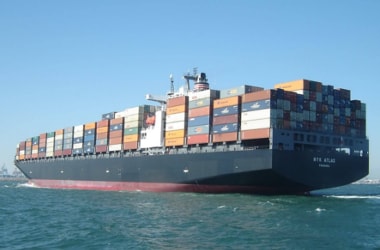 Noting positive growth for 6 months in a row, Indian exports soared 17.48 percent to USD 24.5 billion in Feb 2017 led by petroleum, engineering and chemicals. Noting positive growth for 6 months in a row, Indian exports soared 17.48 percent to USD 24.5 billion in Feb 2017 led by petroleum, engineering and chemicals.
But trade deficit also widened to USD 8.89 bn as imports grew.
Exports during Feb 2017 showed a double digit positive growth for the first time.
Imports were up 21.76% to USD 33.38b leaving a trade deficit of USD 8.89b as against USD 6.57 bn in Feb 2016.
During the April-Feb period of the current fiscal, exports have expanded by 2.52 percent to USD 245.4 bn.
Imports dipped 3.67 percent to USD 340.7 bn.
Trade deficit during the 11 month period stood at USD 95.28 bn as against USD 114.3 bn in the same period of the previous fiscal.
Oil imports rose by 60% to USD 7.68bn in Feb. Non-oil imports rose by 13.65% to USD 25.7 bn.
Gold imports too jumped manifold to USD 3.48 bn in February as against USD 1.4 bn in the same month last fiscal.
Trade Deficit: Know More
- Trade deficit is an economic measure of a negative balance of trade.
- In this, a country's imports exceeds its exports.
- A trade deficit represents an outflow of domestic currency to foreign markets.
|
▼ India's retail inflation grows by 3.65% [03-15-17]
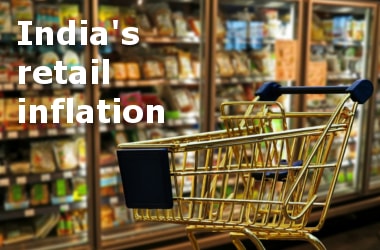 India's retail inflation rate grew by 3.65 percent in February, up from January's 3.17 percent. India's retail inflation rate grew by 3.65 percent in February, up from January's 3.17 percent.
This mirrors flat demand as companies and households hit by note-ban induced cash crunch raised spending on goods and services.
In February 2016, consumer price index inflation grew 5.18 percent, indicating a more expansionary economy a year back.
Retail inflation information, measured by CPI, is the broadest metric to measure cost of living in India.
The recent price data released by CSO represents a pick up in pace of remonetisation, led by food price increase.
Consumer food price inflation is a metric to measure changes in monthly kitchen costs. It grew 2.01 percent as against 0.53 percent in January and 5.30 percent in February 2016.
Fruit prices have risen 8.33 percent in February, up from 5.81 percent in January. The price of prepared meals and snacks saw a negligible change at 5.45 percent growth in February and 5.54 percent in January.
The scrapping of high value notes led to less spending, decreasing the demand for perishable products, when the sudden currency recall exercise commenced.
Prices of veggies and pulses remained tepid. The growth in CPI for vegetables contracted to -8.29 percent in February from 0.70 percent in 2016.
Index for fuel and light witnessed a small growth at 3.90 percent in February from 3.42 percent in January.
Housing inflation remained almost flat and grew at 4.90 percent in February, compared with 5.02 percent in January.
|
▼ Industrial production grew by 2.7% Y-O-Y in Jan 2017 [03-14-17]
India's industrial production grew 2.7 percent Y-O-Y in Jan 2017 despite demonetisation, according to CSO.
Growth was due to the base effect as output had shrunk 1.59% in Jan 2016
Performance was better than 0.38 percent contraction in Dec 2016 but lagged the 5.65 percent growth posted in Nov 2016.
Manufacturing sector accounted for 75% of the total IIP grew 2.3% in January from -2.94 in January 2016 and -1.97% in Dec 2016, but slower than Nov's 5.47 percent pace.
Mining sector recorded a 5.3% growth in January, compared with 1.54% in January 2016 and 5.24% in December 2016.
Electricity production registered a 3.9% growth in January, lower than 6.56% in January 2016 and 6.28% in December 2016.
Capital goods output - a crucial pointer to investment demand in the economy - rose 10.7% from a low base of a contraction of (-) 21.55% in January 2016 as well as from (-) 3.01% in December 2016.
Consumer goods output contracted (-) 1% in January indicating weak consumer demand.
Consumer durables output grew 2.9%.
Only nine out of the 22 industry groups in the manufacturing sector have shown positive growth in the month of January 2017 as compared with the corresponding month of the previous year.
'Electrical machinery & apparatus’ recorded the highest positive growth of 42.4%, followed by 21.8% growth in ‘radio, TV & communication equipment’ and 12.4% in ‘basic metals’.
‘Office, accounting and computing machinery’ registered the highest negative growth of -16%, followed by -14.8% in ‘food products & beverages’ and -13.4% in ‘Other transport equipment’.
Though retail inflation was below the target of 5%, IIP growth for April-January 2016-17 over the corresponding period of the previous year stood at 0.6%.
|
▼ RBI: NBFCs cannot lend more than INR 20000 against gold [03-14-17]
In a fresh move towards a cashless economy, the RBI prohibited the NBFCs of all kinds from lending more than INR 20,000 in cash against gold.
NBFCs have issued cheques for numerous loan amounts above prescribed limits. NBFCS have been directed earlier to disburse only high value loans of INR 1 lakh or more against gold by cheque.
The decision to limit the loan on gold to INR 20,000 from INR 1 lakh is in line with the IT act.
NBFCs: Know More - A Non-Banking Financial Company (NBFC) is a company registered under the Companies Act, 1956.
- It is engaged in the business of loans and advances, acquisition of shares/ stocks/ bonds/ debentures/ securities.
- It is issued by Government or local authority or other marketable securities of a like nature, leasing, hire-purchase, insurance business, chit business.
- It does not include any institution whose principal business is that of agriculture activity, industrial activity, purchase or sale of any goods (other than securities) or providing any services and sale/purchase/construction of immovable property.
- A non-banking institution which is a company and has principal business of receiving deposits under any scheme or arrangement in one lump sum or in instalments by way of contributions or in any other manner, is also a non-banking financial company.
|
▼ India has the highest bribery rate among Asia Pacific nations: TI [03-10-17]
 India has been given the dubious distinction of the highest bribery rate among 16 Asia Pacific countries surveyed by Transparency International/TI India has been given the dubious distinction of the highest bribery rate among 16 Asia Pacific countries surveyed by Transparency International/TI
Nearly 7 in 10 Indians accessing public services paid a bribe.
This is in contrast to the least corrupt country, Japan where only 0.2% of respondents bribed individuals.
Close to half of the respondents from India were positive about the government's efforts to combat bribery.
Even as the government's efforts to tackle bribery were appreciated, slightly more than 40% of the respondents viewed that corruption had increased over the past twelve months.
63% of the respondents in India also felt that they as individuals had the power to fight corruption.
The Global Corruption Barometer for the Asia Pacific Region was released by TI on March 7, in Berlin.
Approximately 90 crore people, or just over one in four, across 16 countries in Asia Pacific, including some of its biggest economies like India and China, are estimated to have paid a bribe to access public services.
For its report - People and Corruption: Asia Pacific, part of the Global Corruption Barometer series, TI surveyed nearly 22,000 people in these countries about their recent experiences with corruption.
India was followed closely by Vietnam where around two thirds (65%) had paid a bribe when accessing public services.
Across the Asia Pacific region, just 22% of the respondents thought that corruption had decreased while 40% of the respondents (41% in India) were of the option that it was on the rise.
In mainland China, 73% of the respondents felt that the level of corruption had worsened. This was the highest of any country surveyed.
Nearly 73% of those who paid a bribe in India were from the poorer section of society, in Pakistan and Thailand this percentage was 64% and 46% respectively.
Surprisingly a reverse trend was found in some countries like China, where the richer sections were more likely to pay a bribe.
In India, respondents reported the highest bribery incident in procuring government healthcare services and even identification related documents.
Nearly 59% of the respondents had paid a bribe for such services.
Bribes paid for education were next on the list with 58% having reported doing so.
TI: Know More
- Headquarters: Berlin
- Founded: 4 May 1993
- Type of business: International non-governmental organization
- Founders: Peter Eigen, George Moody Stuart, Fritz Heimann, more
- Leaders: Cobus de Swardt, José Ugaz
|
▼ New licensing policy to boost oil output [03-8-17]
 India on March 8, 2017 announced an open acreage licensing policy for oil and gas exploration. India on March 8, 2017 announced an open acreage licensing policy for oil and gas exploration.
This is allowing bidders to carve out areas where they want to drill as the energy- hungry country looks at greater foreign investment to boost output.
The world's third-largest oil consumer will conduct auction of oil and gas blocks under the Open Acreage Licensing Policy (OALP) twice a year, with the first round being held in July this year.
OALP auction will be held under the overhauled exploration licensing policy allows pricing and marketing freedom to operators and shifts to a revenue sharing model.
The July auction will be India's first major exploration licensing round since 2010, although it had recently awarded 31 small discovered fields mainly to state-owned and local firms under the liberalised Hydrocarbon Exploration Licensing Policy (HELP).
Crude Oil and Natural Gas & OALP: Know More
- India's domestic crude oil production of 36.95 million tons in 2015-16 barely met 20 per cent of its oil needs.
- Natural gas output at 32.249 billion cubic metres meets less than half of its needs.
- OALP will be a departure from the current licensing policy of government identifying the oil and gas blocks and then putting them on auction.
- It gives an option to a company looking for exploring hydrocarbons to select the exploration areas on its own.
- This selection can be done based on the seismic and well data that the Directorate-General of Hydrocarbons has put in a National Data Repository.
- NDR offers a total of 160 terabyte data of India's 26 sedimentary basins.
|
▼ GoI to revive 50 airports, airstrips under Udan [03-7-17]
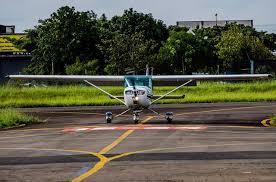 Government of India has approved INR 4500 crore project to revive 50 unserved and under-served airports as well as airstrips. Government of India has approved INR 4500 crore project to revive 50 unserved and under-served airports as well as airstrips.
With the plan, the government is looking to enhance air connectivity to small cities and towns while the revival of such airports and airstrips would be "demand driven".
The proposal was agreed to by the Cabinet Committee on Economic Affairs, chaired by Prime Minister Narendra Modi.
The total cost of the project is estimated to be INR 4,500 crore. 15 airports/airstrips each would be revived during 2017-18 and 2018-19 each while 20 airports/airstrips would be revived during 2019-20.
As many as 50 unserved and under-served airports and airstrips of state governments, Airports Authority of India (AAI) and civil enclaves would be under the project.
Small cities/towns will be connected on commencement of operation of flights to under-served/unserved airports.
It will moreover boost the economic development in these areas as well as surrounding areas in terms of job creation and related infrastructure development.
Revival plan is demand driven. It would depend on firm commitment from airline operators as well as the state governments in terms of providing various concessions.
The unserved and under-served airports are to be developed without insisting on financial viability.
In the Union Budget, Finance Minister Arun Jaitley had announced plans for making adequate provisions for revival of unserved and under-served airports.
To make flying more affordable, the government has already unveiled the ambitious regional connectivity scheme UDAN ('Ude Desh Ka Aam Naagrik') under which fares are to be capped at INR 2,500 for one-hour flights.
|
▼ GST Council approves draft CGST and IGST [03-6-17]
The Goods and Services Tax (GST) Council, in its meeting held in Vigyan Bhawan in New Delhi under the Chairmanship of the Union Minister for Finance & Corporate Affairs, Shri Arun Jaitley has approved the draft CGST Bill and the draft IGST Bill as vetted by the Union Law Ministry.
This clears the deck for the Central Government to take these two Bills to the Parliament for their passage in the ongoing Budget Session. | i. A State-wise single registration for a taxpayer forfiling returns, paying taxes,and to fulfil other compliance requirements. Most of the compliance requirements would be fulfilled online, thus leaving very little room for physical interface between the taxpayer and the tax official. | | ii. A taxpayer has to file one single return state-wise to report all his supplies, whether made within or outside the State or exported out of the country and pay the applicable taxes on them. Such taxes can be Central Goods and Services Tax (CGST), State Goods and Services Tax (SGST), Union Territory Goods and Services Tax (UTGST) and Integrated Goods and Services Tax (IGST). | | iii. A business entity with an annual turnover of upto Rs. 20 lakhs would not be required to take registration in the GST regime, unless he voluntarily chooses to do so to be a part of the input tax credit (ITC) chain. The annual turnover threshold in the Special Category States (as enumerated in Article 279A of the Constitution such as Arunachal Pradesh, Sikkim, Uttarakhand, Himachal Pradesh, Assam and the other States of the North-East) for not taking registration is Rs. 10 lakhs. | | iv. A business entity with turnover upto Rs. 50 lakhs can avail the benefit of a composition scheme under which it has to pay a much lower rate of tax and has to fulfil very minimal compliance requirements. The Composition Scheme is available for all traders, select manufacturing sectors and for restaurants in the services sector. | | v. In order to prevent cascading of taxes, ITC would be admissible on all goods and services used in the course or furtherance of business, except on a few items listed in the Law. | | vi. In order to ensure that ITC can be used seamlessly for payment of taxes under the Central and the State Law, it has been provided that the ITC entitlement arising out of taxes paid under the Central Law can be cross-utilised for payment of taxes under the laws of the States or Union Territories. For example, a taxpayer can use the ITC accruing to him due to payment of IGST to discharge his tax liability of CGST / SGST / UTGST. Conversely, a taxpayer can use the ITC accruing to him on account of payment of CGST / SGST / UTGST, for payment of IGST. Such payments are to be made in a pre-defined order. | | vii. In the Services sector, the existing mechanism of Input Service Distributor (ISD) under the Service Tax law has been retained to allow the flow of ITC in respect of input services within a legal entity. | | viii. To prevent lock-in of capital of exporters, a provision has been made to refund, within seven days of filing the application for refund by an exporter, ninety percent of the claimed amount on a provisional basis. | | ix. In order to ensure a single administrative interface for taxpayers, a provision has been made to authorise officers of the tax administrations of the Centre and the States to exercise the powers conferred under all Acts. |
| x. An agriculturist, to the extent of supply of produce out of cultivation of land, would not be liable to take registration in the GST regime. | | xi. To provide certainty in tax matters, a provision has been made for an Advance Ruling Authority. | | xii. Exhaustive provisions for Appellate mechanism have been made. | | xiii. Detailed transitional provisions have been provided to ensure migration of existing taxpayers and seamless transfer of underutilised ITC in the GST regime. | | xiv. An anti-profiteering provision has been incorporated to ensure that the reduction of tax incidence is passed on to the consumers. | | xv. In order to mitigate any financial hardship being suffered by a taxpayer, Commissioner has been empowered to allow payment of taxes in instalments. |
Source: Press Information Bureau The Council has also included a revised peak rate of 20 per cent under GST, instead from the earlier 18 per cent. This would mean that the total incidence of the tax could go as high as 40 per cent. But smoothening concerns, Revenue Secretary Hasmukh Adhia said that it would not impact the four-tier rate structure of 5, 12, 18 and 28 per cent. The UT-GST Bill would be for levying of the new tax in Union Territories that do not have a legislature (excluding Delhi and Puducherry). The four laws will be approved by the Union Cabinet and taken to the Parliament in the coming session,. Finance Ministry officials said that the proposed anti-profiteering agency under GST would not send out inspectors to check on prices but will look at applications made consumers. The remaining two Bills namely, State Goods and Services Tax (SGST) Bill and the Union territory Goods and Services Tax (UTGST) Bill, which would be almost a replica of the CGST Act, would be taken-up for approval after their legal vetting in the next meeting of GST Council scheduled on 16 March 2017
|
▼ ODF districts now beyond 100: GoI [03-6-17]
Ministry of Drinking Water and Sanitation launched Swachh Shakti Saptah, a week-long programme of activities across the country to highlight the role of women in Swachh Bharat Mission and to recognize their leadership.
Union Minister of Drinking Water and Sanitation, Shri Narendra Singh Tomar, made the national launch of Swachh Shakti Saptaah in Gurugram, Haryana, at a joint event with the Government of Haryana.
Over 1000 women swachhta champions from grassroots in Haryana attended the event.
Deputy Commissioners of 11 ODF districts of Haryana were honoured on the occasion.
Event will culminate in Gujarat with function named Swachh Shakti 2017 where the Prime Minister, Shri Narendra Modi, will address 6000 women sarpanches and honour them for their contribution to Swachh Bharat.
The Minister also announced that the number of ODF (Open Defecation Free) districts in the country has now crossed 100.
Over 1.7 lakh villages have become ODF.
Haryana will become an ODF State by November 2017.
|
▼ NASSCOM: Software sector set to grow 8-10 percent in 2017-2018 [03-3-17]
 Software services industry lobby NASSCOM indicated it expects the sector to grow 8-10 percent in 2017-2018. Software services industry lobby NASSCOM indicated it expects the sector to grow 8-10 percent in 2017-2018.
NASSCOM revised down its fiscal 2017 revenue growth target to 8-10 percent from 10-12 percent as US headwinds emerged.
The United States is the largest revenue source for the industry.
Many domestic IT companies may change their business strategies and regroup themselves owing to newer trends such as increasing automation artificial intelligence, digital data and digital disruption.
At the same time, there is a feeling within Nasscom that the industry is going to change. It is going to change because of automation, artificial intelligence, digital data and digital disruption. So, many companies will regroup themselves and re-architect their journey forward.
Current trend also suggest that job accretion will be at best half of its growth in recent years.
NASSCOM: Know More
- Chairperson: C. P. Gurnani
- Founded: 1 March 1988
- Motto: Transform Business, Transform India
- Headquarters: Chanakyapuri, New Delhi
- Founders: Dewang Mehta, Nandan Nilekani
|
▼ SEBI to tighten algorithmic trading rules [03-1-17]
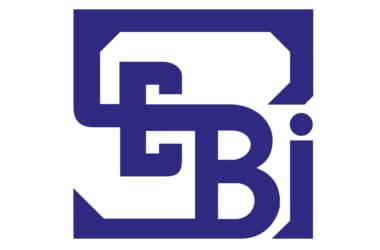 The Securities and Exchange Board of India (SEBI) plans to further tighten the regulations for algorithmic trading. The Securities and Exchange Board of India (SEBI) plans to further tighten the regulations for algorithmic trading.
This aims to minimise instances of misuse of such systems that can be used to execute complex trading strategies at a very high speed.
SEBI chairman U.K. Sinha said that while India was one of the few countries in the world to regulate algorithmic trading - popularly called algo trading - the market regulator is looking to further strengthen the norms.
The aim is for instances of flash crashes that have happened overseas, and also in India a few times, could be minimised.
Algorithmic trading refers to the use of software programmes to execute trading strategies at a much faster pace.
On the National Stock Exchange (NSE), algo trades accounted for close to 16% of all trades.
On the BSE, it was 8.56% in January.
The SEBI chairman also said that while many countries and regulators, including the International Organization of Securities Commissions (IOSCO), have been debating on this issue for many years, only India had been able to come out with proper regulations.
SEBI: Know More
- Formed : 12 April 1992
- Agency executive : Ajay Tyagi, Chairman
- Headquarters : Mumbai, Maharashtra
|
| Chronology of events |
|
Economic Affairs Secretary Shaktikanta Das has announced that Goods and Services Tax (GST) will be implemented from 1st July 2017.
|
|
The Organisation for Economic Co-operation and Development (OECD) has put India’s GDP growth at 7% for the current fiscal, 7.3% for the next and 7.7% for 2018-19.
|
|
The growth of eight core sectors slowed down to a five-month low of 3.4% in January 2017 mainly due to contraction in output of refinery products, fertiliser and cement.
|
|
The maiden regional conference of Eastern States, on the theme of ‘Enhancing steel consumption in India’ was inaugurated by the Union Minister of Steel Shri Chaudhary Birender Singh today in Gangtok, Sikkim.
|
|
Singareni Collieries Company Limited has set a new record with coal production of 58.7 lakh tonnes and highest dispatches of 57 lakh tonnes in a month during February. The mining company’s 1,200 MW power plant has also logged high plant load factor.
|
|
Major ports see 169% surge in iron ore handling in Apr-Jan Iron ore shipments handled by the country's 12 major ports surged 169 percent to 38.61 million tonnes (MT) in the April-January period of this fiscal.
|
|
The Kerala State budget 2017-18 was launched by the State Finance Minister Dr Thomas Isaac. It was is the first full-fledged budget of the present Left Democratic front (LDF) government.
|
|
Chandigarh will be holding a three-day long Destination North East 2017 event from tomorrow, aimed at showcasing North East as a potential destination for investment.
|
|
ICRA The Indian hotel industry's revenue per available rooms (RevPAR) is likely to grow by up to 9 percent in the next fiscal supported by stronger domestic demand, ICRA said in a report.
|
|
ISMA cuts sugar output forecast for 3rd time in 2016-17 Indian Sugar Mills Association (ISMA) has trimmed the country's 2016-17 sugar production forecast for the third time this marketing year today, citing lower cane supply in drought-hit states like Maharashtra.
|
|
The government has approved outright sale of state-owned three special SAIL plants, including Salem and Alloy Steel plants.
|
|
Government of India has envisaged a program named ‘’Blue Revolution’’ to unlock the country’s latent potential through an integrated approach. Thrust areas have been identified for enhancing fisheries production from 10.79 mmt (2014-15) to 15 mmt in 2020-21.
|
|
Gorole, Vaishali has been selected for the establishment of Banana Research Centre, keeping in view the ecological conditions of this place by GoI.
|
|
Sensex opens above 500 points; Nifty hits record high, surpasses previous high of 9119 on March 14, 2017
|
|
Inflation based on wholesale prices shot up to 39-month high of 6.55 percent in February because of costlier food and fuel items. According to the official data released today, food prices witnessed a sharp rise by 2.69 percent in February as compared to a deceleration by 0.56 per cent in the previous month.
|
|
NYSE-listed Business Process Management (BPM) firm WNS (Holdings), has announced the acquisition of Houston, Texas based HealthHelp, an industry leader in care management for $95 million.
|
|
Private sector lender IndusInd Bank has said it will buy IL&FS Securities Services Ltd (ISSL), a subsidiary of Infrastructure Leasing and Financial Services (IL&FS) Ltd, in an all-cash deal
|
|
Private insurer Future Generali India Insurance Company (FGII) has entered into a corporate agency tie-up for its products with public lender UCO Bank.
|
|
State Bank of India and real estate developers’ body CREDAI have signed a memorandum of understanding (MoU) to jointly conduct various initiatives towards development of the realty sector.
|
|
Power equipment maker BHEL has commenced commercial operations of its first 800-MW unit, a supercritical thermal plant. It also marks the company’s foray as a developer into the field of power generation.
|
|
Power equipment maker BHEL has commenced commercial operations of its first 800-MW unit, a supercritical thermal plant. It also marks the company’s foray as a developer into the field of power generation.
|
|
Maharashtra's economy is expected to grow by 9.4 per cent in 2016-17 over the previous year, according to the Economic Survey for 2016-17 presented in the State Legislature.
|
|
V. O. Chidambaranar Port, has crossed the previous financial year’s traffic of 36.85 million tonnes on 17.03.2017, 14 days ahead of the completion of the current financial year. The Port has handled a record traffic of 36.91 Million tonnes till 17.03.2017, with an impressive cargo growth at 4.77% as compared with the same period of last financial year.
|
|
A study conducted by National Productivity Council (NPC) in 2016 has shown that 84% of farmers have expressed that they have applied the nutrients recommendations suggested in soil health card that have proven to be beneficial to them in reducing the cost of cultivation and improving productivity of crops.
|
|
The major milk producing States in the country during the period 2013-14 to 2015-16 are Uttar Pradesh, Rajasthan, Gujarat, Madhya Pradesh, Andhra Pradesh, Punjab and Maharashtra.
|
|
Manufacturing improved in March after a three month decline, while various government measures are likely to push up activity in the infrastructure sector going forward, says a State Bank of India research report.
|
|
Kerala, Tripura and Arunachal Pradesh have joined the Centre’s power distribution company debt relief scheme, Ujjwal Discom Assurance Yojna. With this, 26 states have joined the scheme.
|